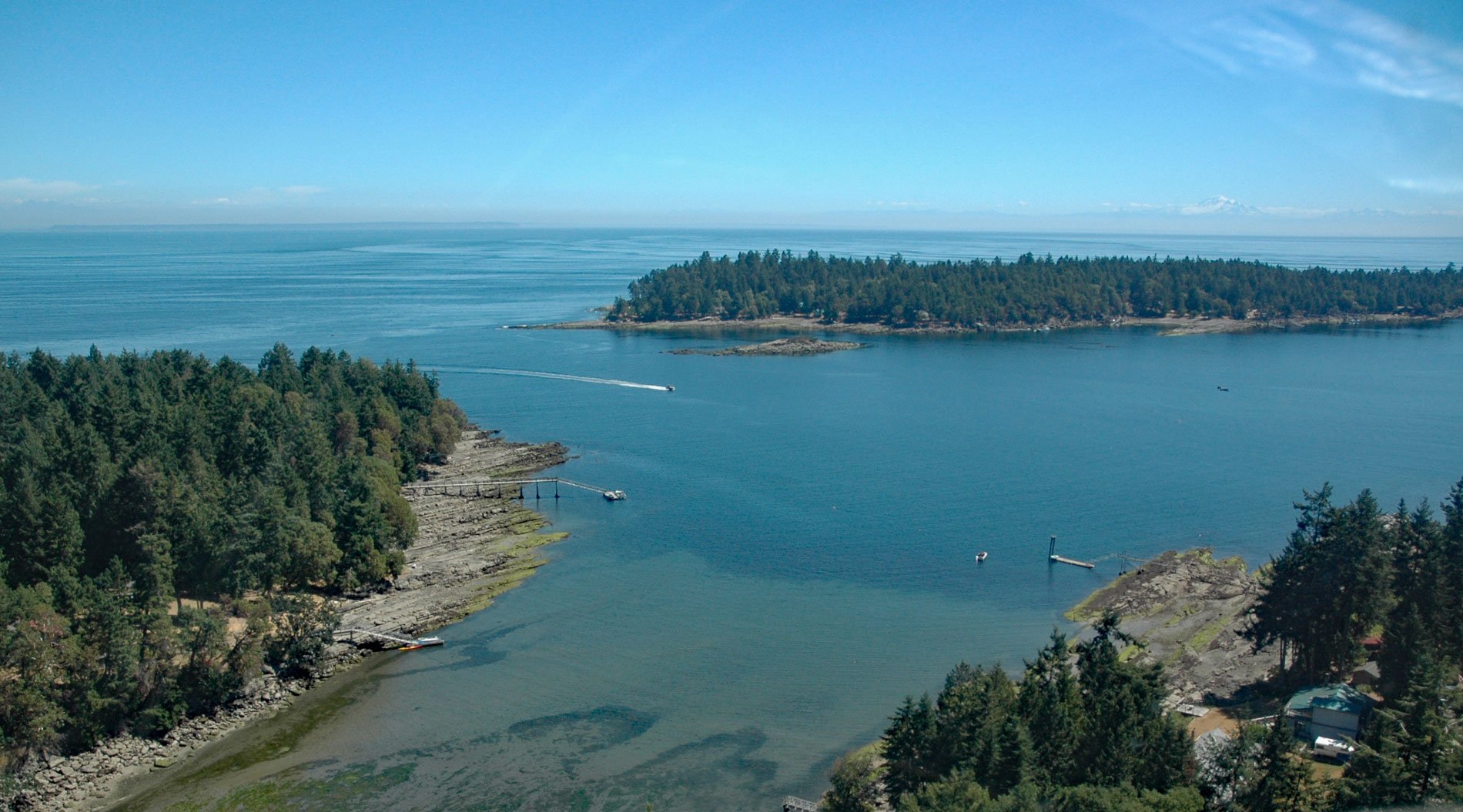Whaler Bay is located on the southeast end of Galiano Island adjacent to Sturdies Bay and across the island from Montague Harbour, about 28 miles (45 km) south-southwest of Vancouver and 18 miles (29 km) north of Sidney, British Columbia. Galiano Island is one of the Southern Gulf Islands on the west side of the Strait of Georgia and is named after the Spanish explorer Dionisio Alcalá Galiano, who explored the area in 1792. Before Europeans arrived, Galiano Island was long inhabited by aboriginal people from the Penelakut First Nation and for thousands of years by other Coast Salish nations. Whaler Bay is named for its early role as a harbor for small whaling vessels that hunted humpback whales in the Strait of Georgia and Howe Sound. The outer part of the bay is exposed to northerly winds but the inner bay is protected from the more frequent southerly gales. Whaler Bay is now surrounded by some of the densest development on Galiano Island. An industrial log dump was located in the bay for many years and residential sewage contributed to pollution. Today, most of the polluters are gone, and eelgrass beds are recovering to provide essential fish habitat.
Whaling in the Strait of Georgia occurred in two distinct periods, from 1866 to 1873 and again from 1905 to 1908. Whales were initially hunted with hand-thrown harpoons, and during this early whaling period, blubber and baleen were the only parts of the whale utilized. Normally a dead whale was towed to a nearby beach for butchering and the blubber loaded for transport to the company shore whaling station. It was then boiled in large try pots to extract the oil. In 1866, Dawson and Company began hunting whales in Saanich Inlet from the sealing schooner Kate. In 1869, Dawson and Douglas Company built a whaling station at Whaletown on Cortes Island, at the northern end of the Salish Sea. This station was later moved to Whaling Station Bay on Hornby Island where it ceased operations in 1873. During this period, a minimum of 81 whales were taken and all were humpbacks whales.
In 1905, commercial whaling again became a major industry in British Columbia with the development of the modern harpoon cannon and faster steam-powered whale catchers. Taking advantage of this new technology, the Pacific Whaling Company of Victoria, opened a whaling station north of Nanaimo at Page’s Lagoon in 1907, with the steam-powered whale catchers Orion and St. Lawrence. The station was located to catch the humpback whales that wintered in the Strait of Georgia and the station would process between three to five whales a day during whaling season. The station employed mostly Chinese, Japanese, and First Nations workers. While whale oil was initially the main product, later canned whale meat, fertilizer, and less processed whale meat were produced. The plant at Page’s Lagoon (now known as Piper’s Lagoon) was short-lived and ceased operation in 1908 after the population of 95 humpbacks in the Salish Sea was decimated. Whaling stations on the outer coast at Sechart, Cachalot, and Coal Harbour continued operating for many decades. The last shore station in British Columbia was the Western Whaling Corporation at Coal Harbour which shut down operations in 1967, although offshore hunting continued until 1975. See a video on whaling in the early 1900s here. Read more here and here. Explore more of Whaler Bay and Galiano Island here:

